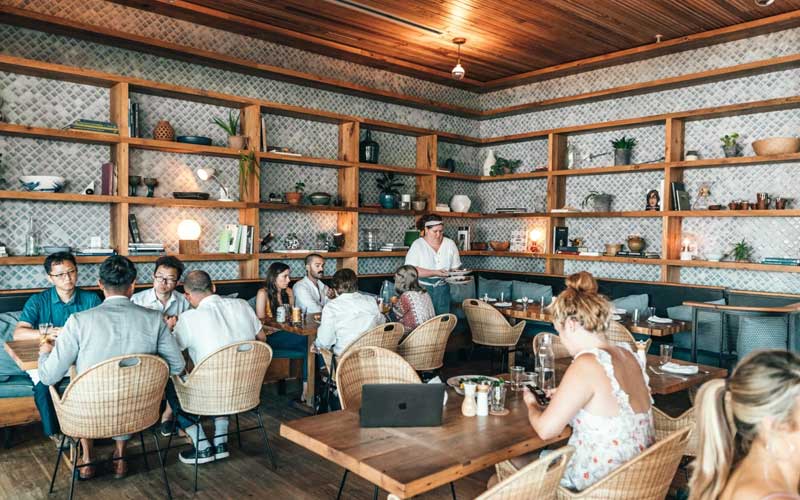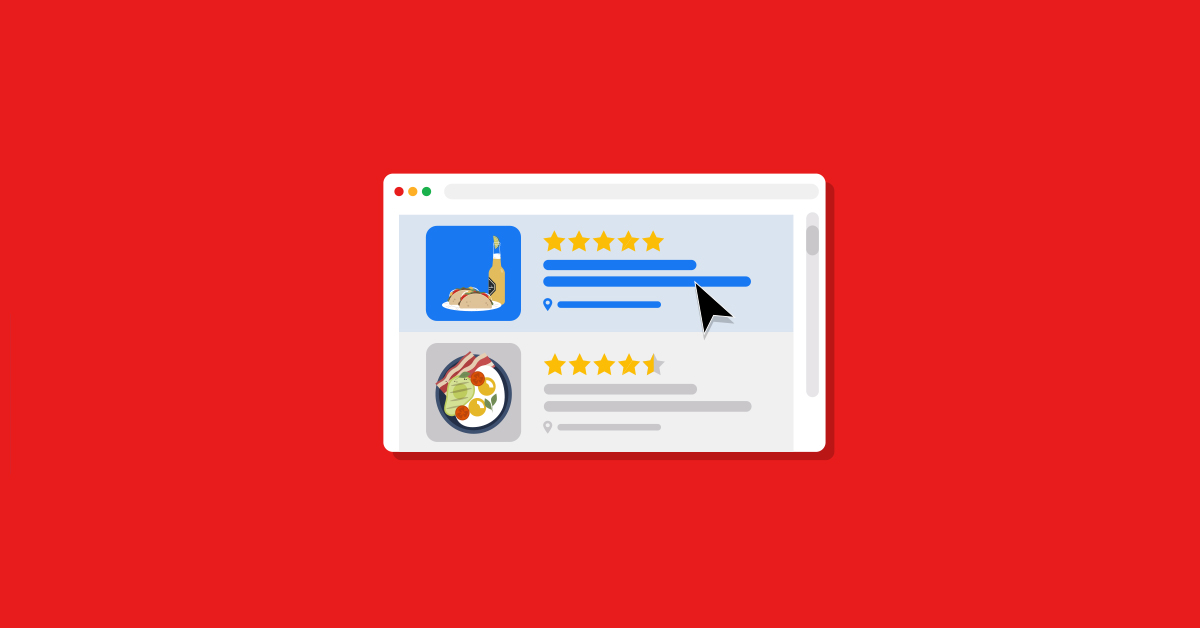
If you’ve been dreaming of opening your own hospitality venue and are setting the wheels in motion to turn that dream into a reality, one of the first steps is to build a business plan for your venture.
A business plan is an essential document that provides the foundation for building your business. By outlining a clear roadmap of how your venue will take shape, operate and generate revenue, your business plan will provide a set of goals and objectives to keep you on track during the busy run-up to opening your business.
But what information should your business plan contain, and how should it be structured?
Let’s dive in.
How to structure your business plan
Creating a business plan is a research-intense and time-consuming process, but it’s crucial to set yourself up for success.
While every business idea is different, there are six chapters that every business plan should contain; these are:
- Executive summary
- Company overview
- Market analysis
- Marketing
- Operations
- Financial analysis and growth
Within each of these chapters, there are several sub-sections that will give a comprehensive overview of your ideas and how your business will operate.
In this article, we tick off all the sections that you should include in your business plan.
1. Executive summary
Your executive summary is the first and most important part of your business plan. This section should excite potential investors about your business idea and encourage them to read further.
The executive summary should provide a concise overview of your business idea. It needs to convey your passion and enthusiasm while also providing an overview of the upcoming content in your business plan. It’s essential to keep this section short and to the point and should be no longer than two pages in length.
Below are some examples for you to consider.
- Mission statement. Your mission statement should convey the aims and values of your business.
- A description of your products and/or services. This section should outline what products and/or services your venue will provide and how these solve problems for your target customers.
- Business goals. Outline where you expect the business to be in one year, three, and five years.
- Target market. This section should outline your ideal customers and your target demographic, e.g. millennials, baby boomers, young families, students or office workers.
- Competition and what differentiates your business. Briefly explain who your competition is and what unique selling proposition will help you succeed.
- Your management team. Highlight your management team, their prior experience, and what they will bring to the table to give your business a competitive edge.
- Financial outlook. This section will provide an overview of potential costs and the anticipated return on the investment.
While your executive summary is the first part of your business plan, it should be the last thing you write. This will enable you to summarise the components that make up your business plan and highlight the key points to grab your reader’s attention.
2. Company overview
The second chapter of your business plan is the company overview. This section should explain the basic elements of your business by introducing information about your venue’s concept, location, product offering, design features, company structure and service model.
Within this chapter, you should include four sub-sections.
- Concept
- Sample Menu and Pricing
- Design and Layout
- Company Structure
3. Company overview – Concept
Start by outlining your concept. You don’t need to go into too much detail; simply provide a short and snappy high-level overview of your idea.
Consider the following questions when crafting your concept statement:
- Will your venue have a theme?
- What is your brand identity?
- How will you stand out from the competition?
- Where will your venue be located?
- What will your product offering look like?
- What will your service style look like?
- Who is your target market?
- What is your price point or range?
4. Company overview – Sample menu and pricing
In this section, you should share a sample menu that will be used in your venue and the accompanying pricing strategy. While this doesn’t have to be the final menu or pricing you’ll launch with, it should outline the types of products you’re going to sell.
If you’re planning to open a restaurant, for example, you will need to detail what cuisine you’re going to offer, along with a sample drinks menu. Your sample menu doesn’t have to cover everything, but it should paint a picture of your offering, e.g. a selection of starters, main courses, desserts and side dishes, as well as an overview of your alcohol selection, such as wines and cocktails.
Next, you need to address how you plan to set prices. Consider the following questions when outlining your pricing strategy:
- Do your prices reflect your positioning?
- How does your pricing compare with your competitors?
- How important is price to your target market?
- Will you offer specials such as happy hours?
5. Company overview – Design and layout
The design and layout of your venue need careful consideration, and this section should outline how the design of your venue will complement your concept. It should also address how your layout will allow staff, customers, food and drink to move through your venue efficiently.
Use this section to answer the following questions:
- What will the interior of your venue look like? E.g. colour schemes, wall art, plants, lighting.
- What furniture will you have, and where will it sit?
- What equipment do you need, and how will this fit into your workflows?
- How will you store inventory?
- Will your staff wear a uniform? If so, what will it look like?

6. Company overview – Structure
This is the final sub-section of the company overview chapter and should include an outline of your company structure and the roles and responsibilities within your business.
No matter the size of your team, it’s essential to highlight the different roles and responsibilities you expect to have in your business to allocate a budget for their salaries.
7. Market analysis
The third chapter of your business plan will tackle your market analysis.
In this chapter, you’ll analyse the current market, including the hospitality industry, your target demographic, competitors and location analysis. It should also address your market position and how your new venue will bring something unique to your area or address an unmet need.
Within this chapter, you should include five sub-sections.
- Market research
- Target market
- Competitive analysis
- Location analysis
- Market positioning
8. Market analysis – Research
It’s essential to conduct thorough market research before writing your business plan, and this section is where you’ll outline your key findings.
Here are some points to consider:
- Industry size – how many people need your product or service?
- Market trends – is the market growing or shrinking? What trends impact the market, e.g. sustainability, evolving technology, increases/ decreases in immigration?
- Target market – how many people in your chosen location are your ideal customer?
- Barriers to entry – what obstacle will you face, e.g. stagnant rental market and high levels of competition in the immediate area?
- Threats and opportunities – what threats and opportunities will your business face, e.g. staff shortages, high cost of goods and supply chain issues?
9. Market analysis – Target market
The Australian hospitality industry is highly competitive, so it’s important to understand who your venue will appeal to and how you will attract customers.
This section should be used to outline who your target customers are and what makes them tick. Researching all of this information in detail will enable you to craft targeted marketing materials and tailor your customer experience.
To get the ball rolling, start by answering the following questions.
- Who is your ideal customer?
- What is their age/ income level/ occupation?
- What are their values and beliefs?
- How do they prefer to order and pay?
- What is their budget?
- What is their repeat purchasing potential?
- What marketing channels do they use?
- How easy is it to communicate with them?
10. Market analysis – Competition
Your competitive analysis should assess the current competitive market in your chosen location.
To start with, list all other hospitality venues in the area and note down each venue with a similar concept to yours. From there, you can narrow down who your direct competitors are likely to be.
To make it easier to directly compare your venue with your competitors, create a matrix table with your venue in one column and your competitors in separate columns. You can then add several rows to your matrix to quickly compare key points of difference between each venue and your own.
Some examples include:
- Number of seats in each venue
- Opening hours
- Marketing channels used by each venue
- Price points
- Menu offering
- Customer base
11. Market analysis – Location
Your location analysis should focus on the general area or suburb where you plan to open your venue.
This section should answer the following questions.
- Why did you choose this location? E.g. local population growth and increased residential development.
- Which demographics live in or regularly frequent the area? E.g. retirees, young families, students, office workers, tourists etc.
- Is there a lot of foot traffic in the area?
- Are there good links to public transport?
- Is there ample parking?
- What times of day and days of the week are the busiest, and when is it quiet?
- How much competition is in the direct vicinity?
12. Market analysis – Positioning
The final sub-section in the market analysis chapter will be your market positioning.
This section must highlight how your venue will differ from others in the area. Will you provide products currently lacking in the area, for example?
It’s also crucial for your market positioning to hammer home your adaptability, as this will emphasise your ability to innovate, grow and, ultimately, generate revenue.
Here are some examples to spark your imagination.
- Retail products – reusable coffee cups, coffee beans, signature sauces, bottled cocktails or branded tote bags.
- Monthly events – barista or cocktails courses, cooking classes, live music events, trivia nights, wine tasting.
- Sustainability – sustainably focused products and venue.
- Cook-at-home kits – recipe cards and ingredient packs for popular menu items.
- Online ordering – offering online ordering for customers to order ahead or for delivery.

13. Marketing
The fourth chapter of your business plan is all about marketing. This chapter will detail your marketing strategy and how you plan to communicate with your customers.
This chapter will contain three sub-sections.
- Marketing channels
- Loyalty program
- Events and offers
14. Marketing – Channels
Use this section to outline what marketing channels your target demographic will likely consume and how you will use each channel to communicate with your customers.
Select the most relevant channels for your target market from the list below:
- Website
- Paid and organic social media (Instagram, Facebook, Twitter, LinkedIn, Pinterest, Tiktok)
- Email marketing
- Content marketing and search engine optimisation (SEO)
- Print marketing (brochures, flyers, business cards)
- Public relations (features on Broadsheet, Concrete Playground, Time Out etc.)
- Word-of-mouth
- Referrals
15. Market analysis – Loyalty program
If you’re going to offer a loyalty program, this section should outline the specific details of your loyalty program, such as how customers will earn points and what rewards you’ll offer. If you don’t plan to offer a loyalty program, you can exclude this section from your business plan.
Consider the following questions to give a comprehensive overview of your loyalty program.
- How will you run the program? E.g. will you create your own or use loyalty and rewards software?
- How will customers earn rewards?
- What incentives and rewards will you offer?
- How will customers track their points? E.g. will they be given a card or have an app on their phone?
- What benefits will the loyalty program bring to your business? E.g. encourage repeat visits and increase average order value.
16. Market analysis – Events and offers
This will be the final sub-section of your marketing chapter and should outline the specific details for any offers or events you plan to run. Please exclude this section if you don’t intend to host events or have special offers.
To get started, it’s important to consider the following questions.
- What special offers will you promote, and how will these impact your bottom line?
- What events will you host, and how regularly will they occur?
- How will you promote your events and offers?
- What benefits will these events and offers bring to your business?
16. Operations
The fifth chapter in your business plan should cover operations and will address how your venue will operate day-to-day once you have opened your doors.
This chapter should include three sub-sections.
- Staff and training
- Work health and safety standards
- Suppliers
17. Operations – Staff and training
The staff and training section will outline how you handle training, staff scheduling, payroll and performance insights.
Use this section to address the following points:
- Industry award (this will determine minimum rates of pay, work hours and leave entitlements for your staff)
- Certificates and training needed by staff to be compliant
- Recruitment procedures
- Onboarding procedures
- Wage procedures, e.g. pay cycles, payslips, timesheets
- Staff scheduling
18. Operations – Work health and safety standards
In the wake of the pandemic, health and safety are critical for hospitality businesses. Therefore, it’s essential to outline how you’ll address health and safety procedures in your venue.
This section should cover the following:
- Your cleaning procedures
- Food health and safety guidelines
- How you’ll handle customers with food allergies
- Fire safety and evacuation procedures
- Certificates and licences you’ll need to operate legally, such as liquor licences and fire safety certificates
- Kitchen hygiene plan
c. Operations – Suppliers
This section will be the last in your operations chapter and should include a list of potential suppliers you’ll need to run your business efficiently.
We suggest creating a table in this section to analyse suppliers and their respective costs quickly.
To get started, research local suppliers in the following categories.
- Inventory, e.g. fresh fruit and vegetables, dairy products, meat and alcohol suppliers.
- Technology, e.g. POS platforms, online ordering, payment and delivery partners.
- Hardware, e.g. receipt printers, tablets, cash drawers, EFTPOS machines
- Cleaning, e.g. disinfectant, chemicals, bathroom supplies.

20. Financial analysis & growth
The final chapter in your business plan will outline your financial objectives for your first year and how you plan to grow the business.
This chapter will include four sub-sections.
- Investment plan
- Projected P&L
- Break-even analysis
- Expected cash flow
21. Financial analysis & growth – Investment plan
Your investment plan is crucial if you’re using your business plan to pitch to investors; you can exclude this section if you don’t need to pitch for investment.
Use this section to explain the initial investment you require and what you plan to use the investment in your first year. This usually includes kitchen equipment, furniture, payroll, legal fees, marketing, etc.
22. Financial analysis & growth – Projected P&L
Your projected profit and loss (P&L) statement is an integral part of your business plan as it highlights exactly how much cash is coming into your business versus what’s being spent. As this is only a projection, you’ll need to make several assumptions about your finances.
Download our free Profit and Loss Template to get started.
23. Financial analysis & growth – Break-even analysis
This section should explain how much revenue you will need to generate to break even once all of your overhead and operational costs are factored into the equation.
We recommend creating a couple of different break-even analyses to address different scenarios. For example, your payroll costs will vary each month, and seasonality can affect sales and operating costs.
24. Financial analysis & growth – Expected cash flow
This section will be the last in your financial analysis and growth chapter and conclude your business plan.
You should address how you will track the amount of cash your business has on hand at any given time. Your expected cash flow should (based on your expectations) highlight how your venue can support itself even during quiet periods without additional investments and support.
Download your free business plan template
We have created three in-depth business plan templates for aspiring bar, cafe and restaurant owners. The easy-to-use templates help you outline your vision by detailing how your business will take shape and operate.

News you care about. Tips you can use.
Everything your business needs to grow, delivered straight to your inbox.


